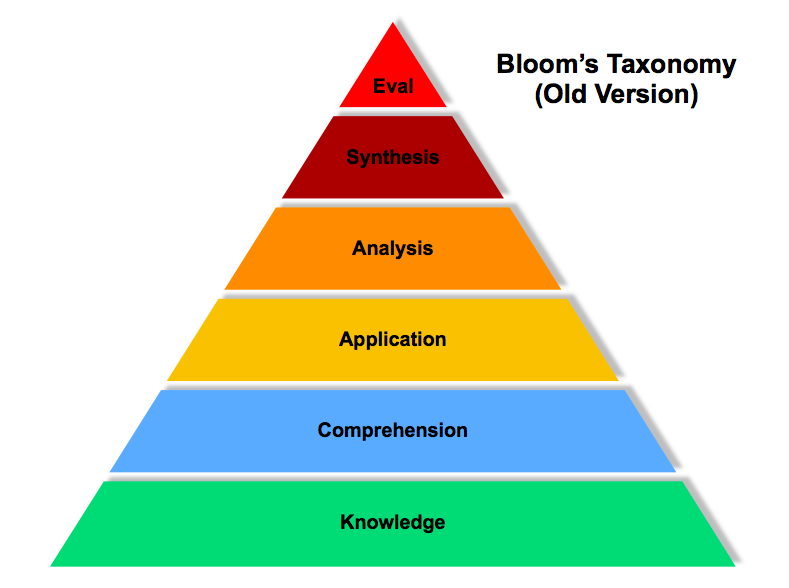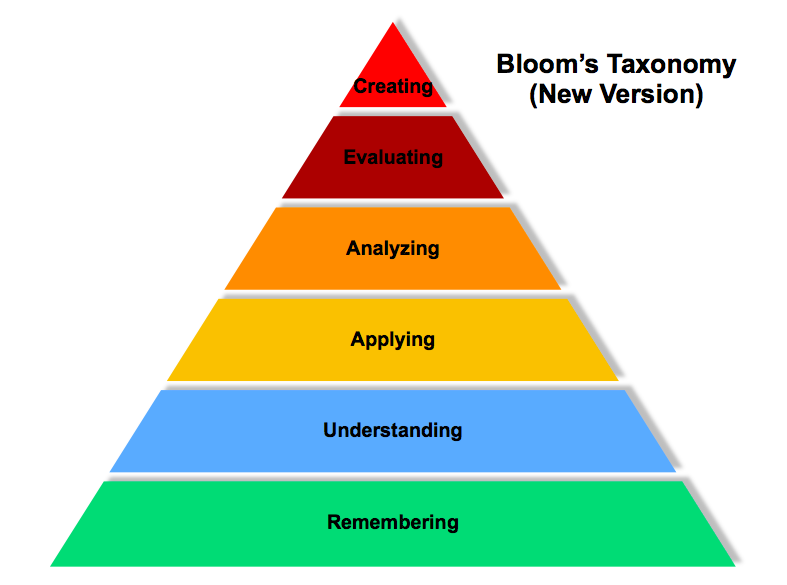Bloom’s Taxonomy is a model that is a hierarchy — a way to classify thinking according to six cognitive levels of complexity.
Contributors
- Benjamin S. Bloom (1913-1999)
Key Concepts
Bloom’s model consists of six levels, with the three lower levels (knowledge, comprehension, and application) being more basic than the higher levels (analysis, synthesis, and evaluation)[1]. Some think of the levels as a stairway, in which learners are encouraged to achieve a higher level of thinking. If a student has mastered a higher level, then he or she is considered to have mastered the levels below.
Bloom’s model has been updated to account for 21st century needs[2]. The old model and new model are depicted below.
Old Model

New Model

Additional Resources and References
References
- Bloom, B. S. (1956). Taxonomy of educational objectives: The classification of educational goals.
- Anderson, L. W., Krathwohl, D. R., & Bloom, B. S. (2001). A taxonomy for learning, teaching, and assessing: A revision of Bloom’s taxonomy of educational objectives. Allyn & Bacon.




